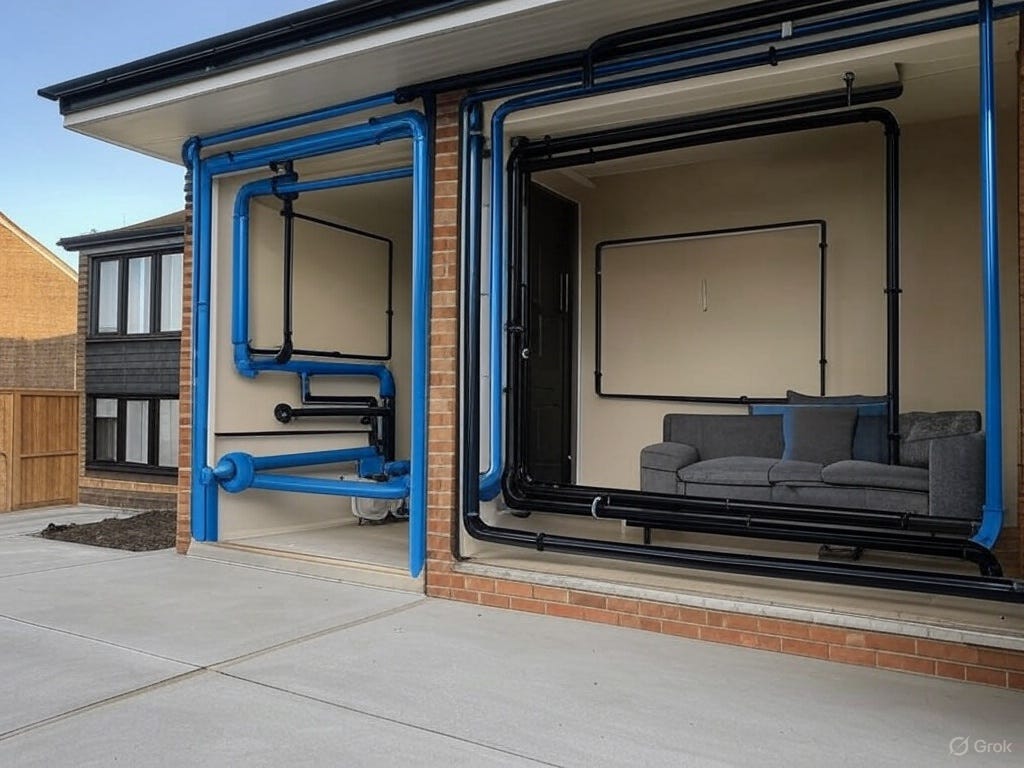My youngest sun and air asked whether it is OK to drink water from a bathroom tap rather than from a kitchen tap. Good question.
Spoiler alert - the answer is yes, but to get there you need to think about the plumbing and more importantly about the economics, and oh… about the energy transition.
The Engineering
Generally speaking, a building has one water inlet from the municipal (communal) water source. Some houses may have their own well, but again it is a single source.
From this point, the water is distributed to all needs: thus the water in the kitchen taps is the same as the water in the bathroom taps. What is somewhat more incongruous is that the water you use to flush the toilet, wash the car or water the garden is “potable” water. That is, drinkable, cleansed and possibly fortified with fluoride. In most cases water is paid for, albeit super cheap. So why would you pay for drinkable water and literally flush it down the toilet?
The Economics
Imagine the “logical” alternative - that is you have two water sources. One, let’s call it “grey” water is cheaper but not potable, but entirely suitable for toilet flushing, car washes and gardens. The other, more expensive “blue” potable water for kitchen (and maybe bathroom) taps. This would necessitate two independent and mostly parallel systems of piping. Two “mains” water systems in the municipality coming to your house, and two sets of piping in your house.
All this additional infrastructure would need
additional upfront costs (Capex),
the increased cost of maintenance (Opex).
significant additional space.
The fact that we don’t have this is testament to the cheapness of potable water (in Quebec mains water is actually free and unmetered!). From the fact that we flush toilets with potable water we can understand that on a system level, it is better to do this than to have two parallel systems.
It is not a great stretch to understand that the infrastructure cost of having some cheap “grey” water and some less cheap “blue” water would be greater than just using “blue” water for everything.
Hence we flush toilets with potable water.
The Parallel Economy
This concept offers an interesting parallel to the ongoing energy transition. The “energy transition” leads to a mix of energy sources—wind and solar, which generate power when conditions allow, alongside thermal sources like gas, coal, and nuclear, which provide reliability when renewables fall short.
This creates a dual energy system: one intermittent and weather-dependent, the other steady and dispatchable. Much like the dual water pipes, maintaining two distinct energy infrastructures comes with significant costs— everywhere it is being tried, costs continue to rise.
There is a hope that by building more and more wind and solar, combined with unrealistic expectations of energy storage (batteries, hydrogen as well as completely fictional “Dispatchable Emission-Free Resources”) will obviate the need of the hated thermal plants. This goal seems to be very elusive apart from the oft-quoted and exceptional cases (Iceland, Paraguay, Bhutan).
Large industrial countries, not situated on massive hydro/geothermal resources, are likely to need the thermal power plants for many years to come. Thus, the cost of maintaining dual systems is likely to endure.
Greener and cleaner, maybe, but not cheaper.






I like your analogy.
I describe it slightly differently.
It’s like purchasing a solar powered car which only runs when the sun is shining and is pretty much useless in the UK winter, so you have to buy a second (reliable fossil fuel powered) car to run your life in a normal way, go to school, work, shops etc.
So you have two cars, two insurance, two depreciation, tyres, servicing, cleaning etc.
You shouldn’t have bothered with the solar car in the first place. If you can’t rely on it, it has no utility, it’s effectively worthless.
We are running our electricity grid with two entirely separate sources of generation, one unreliable (renewables) and virtually 100% backup for those renewables in terms of gas. No wonder electricity prices have gone up.
Lots of good comments. Interestingly, in Ottawa we pay for water, and its not as cheap as I expected, our family of four in a decent sized house uses $100/month.